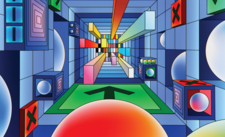A customizable distro with better support
Distro Walk – EuroLinux

© Photo by DeepMind on Unsplash
EuroLinux offers enterprise class software with support from real engineers for a fair price. Bruce talks to the developers behind this RHEL-based distribution.
Based on Red Hat Enterprise Linux (RHEL), EuroLinux [1] is a Polish-based commercial distribution that sells support from engineers and offers specialist editions, including a free community edition and editions for Raspberry Pi, containers, the cloud, and desktops. In keeping with the company's philosophy, my questions were answered by leading developers.
Linux Magazine (LM): Tell readers about the founding of EuroLinux.
EuroLinux (EL): EuroLinux was founded in 2013 by a group of individuals who had been selling and supporting commercial open source software since 2000. Our company's name originates from the name of its first product, which was the EuroLinux operating system.
[...]
Buy this article as PDF
(incl. VAT)
Buy Linux Magazine
Subscribe to our Linux Newsletters
Find Linux and Open Source Jobs
Subscribe to our ADMIN Newsletters
Support Our Work
Linux Magazine content is made possible with support from readers like you. Please consider contributing when you’ve found an article to be beneficial.

News
-
Parrot OS Switches to KDE Plasma Desktop
Yet another distro is making the move to the KDE Plasma desktop.
-
TUXEDO Announces Gemini 17
TUXEDO Computers has released the fourth generation of its Gemini laptop with plenty of updates.
-
Two New Distros Adopt Enlightenment
MX Moksha and AV Linux 25 join ranks with Bodhi Linux and embrace the Enlightenment desktop.
-
Solus Linux 4.8 Removes Python 2
Solus Linux 4.8 has been released with the latest Linux kernel, updated desktops, and a key removal.
-
Zorin OS 18 Hits over a Million Downloads
If you doubt Linux isn't gaining popularity, you only have to look at Zorin OS's download numbers.
-
TUXEDO Computers Scraps Snapdragon X1E-Based Laptop
Due to issues with a Snapdragon CPU, TUXEDO Computers has cancelled its plans to release a laptop based on this elite hardware.
-
Debian Unleashes Debian Libre Live
Debian Libre Live keeps your machine free of proprietary software.
-
Valve Announces Pending Release of Steam Machine
Shout it to the heavens: Steam Machine, powered by Linux, is set to arrive in 2026.
-
Happy Birthday, ADMIN Magazine!
ADMIN is celebrating its 15th anniversary with issue #90.
-
Another Linux Malware Discovered
Russian hackers use Hyper-V to hide malware within Linux virtual machines.

